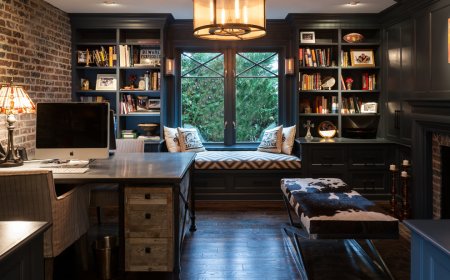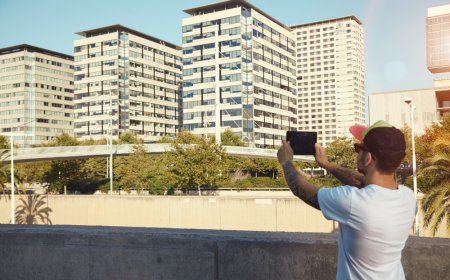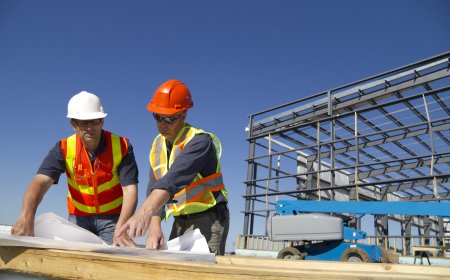Common Disputes Over a Lease for Residential Property and How to Resolve Them!
Explore the best options for a Lease for Residential Property. Secure your ideal home today with flexible terms and affordable monthly lease plans.

Disputes over security deposit returns are a frequent issue between landlords and tenants. Even though a Lease for Residential Property generally includes terms for deposit deductions, unclear clauses can still lead to misunderstandings. Tenants might insist the property was left in good condition, while landlords could claim excessive damage occurred. To reduce the risk of such conflicts, it's important for both parties to perform detailed inspections at move-in and move-out, ideally with photo documentation. Transparent communication and solid records often result in smoother, faster resolutionswithout needing legal intervention.
Proper maintenance records, receipts for repairs, and signed inspection checklists can further strengthen a partys position if disagreements arise. It's also wise for tenants to notify landlords of any pre-existing damages at the start of the lease and follow up in writing. Landlords, in turn, should provide a detailed itemized list of any deductions made from the deposit. In many cases, these proactive steps can prevent tension and foster a respectful landlord-tenant relationship built on fairness and clarity.
Disagreements Arising From Maintenance Responsibilities and Property Repairs
Maintenance and repair obligations can become a gray area if the lease terms lack specificity. Tenants might assume landlords are responsible for all repairs, while landlords may expect tenants to manage minor fixes. This misalignment creates tension, especially in older properties where issues arise frequently. To address this, the agreement should clearly define who handles what types of repairs. Prompt reporting of issues and a standardized response timeline can also improve trust and reduce the likelihood of conflict over maintenance delays or neglect.
Conflicts Related to Rent Increases and Unexpected Additional Fees
Sudden increases in rent or the addition of hidden fees can catch tenants off guard, leading to disputes. Even if allowed under local laws, rent hikes without adequate notice can feel unfair. Transparency is keylandlords should provide detailed, written notice well in advance, citing reasons and any legal justification. Tenants, in turn, should familiarize themselves with local rent control regulations and negotiate respectfully if increases feel unreasonable. Clear expectations and open dialogue go a long way in maintaining a cooperative landlord-tenant relationship.
Issues With Early Termination and Breaking the Lease Before the Agreed Period
When tenants need to move out earlydue to job changes, family emergencies, or personal reasonsdisputes can arise if penalties for early termination arent clearly stated. Landlords may demand the full terms rent, while tenants might expect leniency. To minimize friction, the agreement should outline the process for early termination, including notice periods, financial penalties, and re-renting procedures. Offering options such as a lease break fee or allowing subletting can create flexibility and reduce disputes in these situations.
Lease for Residential Property: Whats the Standard Duration and Why It Matters
The term length of your rental contract affects much more than how often you'll pack boxes and rent a moving truck. It plays a crucial role in financial planning, neighborhood stability, and even your ability to negotiate better rent. For tenants, longer contracts may offer price protection in competitive markets, while shorter ones can offer flexibility if job or personal circumstances change. For landlords, locking in a reliable tenant for 12 months or longer reduces vacancy risk and turnover costs. This dynamic makes the term one of the most impactful clauses in any rental agreement.
Legal Frameworks and Market Norms That Help Define What Is Considered a 'Standard' Term
Rental laws vary by location, but many jurisdictions establish default expectations when it comes to how long a residential agreement typically lasts. In areas with strong tenant protections, landlords may be required to offer a minimum term or provide specific notice for non-renewal. These legal norms often reinforce the 12-month cycle, especially in urban centers where seasonal rental patterns influence availability. At the same time, evolving housing trendslike remote work or digital nomad lifestylesare pushing some markets to adapt with more flexible, short-term options. Understanding the legal boundaries and prevailing market customs in your region is essential when evaluating any new agreement.
How Duration Affects Flexibility, Renewal Options, and Potential for Rent Increases
The length of your rental arrangement doesn't just determine your move-in and move-out dates; it also shapes what happens at renewal time. Tenants with shorter agreements may face frequent rent hikes or sudden non-renewals, especially in hot housing markets. Conversely, a longer term can offer more control over living costs and reduce the stress of having to renegotiate frequently. For landlords, offering flexibility might help attract a broader pool of applicants, but it could also introduce greater financial risk. Ultimately, striking the right balance between duration and adaptability is key for a stable and mutually beneficial rental relationship.
Monthly Rent Trends: What Are Properties for Rent in Lahore Costing in 2025?
The demand for Properties for Rent in Lahore has seen a significant surge in 2025, driven largely by the citys continued urbanization and infrastructure development. Areas like DHA, Gulberg, and Johar Town have witnessed considerable rent increases due to their proximity to commercial hubs and upgraded civic facilities. In these high-demand neighborhoods, rental prices for a 10-marla house now hover between PKR 150,000 to PKR 250,000, depending on amenities and location. The influx of professionals and expatriates into Lahore has further pushed up demand, making these localities particularly competitive.
Affordability Remains a Challenge for Middle-Income Families in Developing Zones
As rental costs rise in central Lahore, families are increasingly turning to suburbs like Raiwind Road, Ferozepur Road, and Barki for more affordable options. In 2025, a 5-marla house in these areas typically rents for PKR 35,000 to PKR 60,000 per month. While this is significantly lower than premium zones, challenges such as limited public transportation and fewer educational institutions still persist. However, developers are responding with gated communities and modern housing schemes, gradually improving the living standards in these regions.
Apartment Living Gaining Popularity Among Young Professionals and Small Families
The apartment rental market has seen steady growth, especially in areas like Gulberg, Bahria Town, and Askari. With a strong emphasis on security and lifestyle conveniences, apartments are now a preferred option for small families and young professionals. Monthly rents for 2-bedroom units range from PKR 45,000 in peripheral sectors to over PKR 120,000 in luxury developments. The shift toward vertical living indicates changing preferences among renters, prioritizing location, security, and amenities over traditional housing space.
Student Housing Near Academic Institutions Shows Consistent Rental Activity
Lahores status as an academic hub continues to impact rental trends, particularly around institutions like LUMS, UET, and Punjab University. Shared accommodations, studio apartments, and small flats in these areas maintain high occupancy throughout the year. In 2025, the average rent for a shared apartment near university zones ranges from PKR 15,000 to PKR 25,000 per student. With the rising student population and limited campus housing, landlords enjoy steady returns and low vacancy rates.
Properties for Rent in Lahore for Expats and Foreigners: What to Know
Lahore is a city with a rich cultural heritage and a growing cosmopolitan vibe, making it an attractive destination for foreigners. Neighborhoods like DHA (Defence Housing Authority), Gulberg, and Bahria Town are top picks among expats due to their modern infrastructure, enhanced security, and access to international-standard amenities. These areas often offer a blend of Western comfort and local charm, with nearby cafes, shopping malls, and recreational spots that cater to a global lifestyle.
Key Legal Considerations When Foreign Nationals Are Renting a Home in Lahore
Renting a home in Lahore as a foreign national requires an understanding of certain legal formalities. Although the rental market is fairly accessible, expats must ensure that lease agreements are properly documented and legally vetted. Registration with the local police station is also required in many cases, especially for long-term stays. Its highly advisable to work with a reputable real estate agent or legal advisor who can help navigate these requirements and avoid any complications down the road.
Budgeting and Cost Expectations for Renting Homes in Upscale and Mid-Range Areas
Rental prices in Lahore can vary significantly based on location, property size, and amenities offered. While upscale areas like DHA and Gulberg come with premium rates, there are more affordable yet comfortable options in places like Johar Town, Askari, or Wapda Town. Foreigners should factor in utility costs, maintenance fees, and possible service charges when creating a monthly housing budget. Many landlords expect payments in advance for several months, so it's wise to negotiate clearly and review all financial terms beforehand.






































